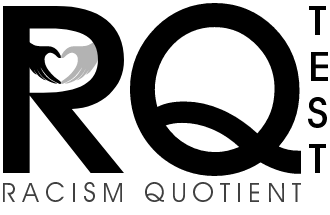
The ugliness of racism is no new problem. Its proportions are as familiar as they are far-flung, its putrefaction manifest at even the highest levels of government, in our law enforcement agencies and our educational systems, encouraging further and further into the open, clandestine organizations such as the KKK, and enshrining a threat not only to the fundamental rights of specific groups, but indeed to the very future of our society, our country and our world.
America is not the only country faced with this problem, but this fact is, if anything, one more reason for urgency in finding a solution. We need only remind ourselves of American's unique position in world affairs, and the inevitable "full circle" effect, in such a position, of what we do or fail to do. That much has already been done in the fight against racism and other prejudices is not to be denied, nor commendation withheld for the courage and humanity of those who have fought for so long. The Racism Quotient Test and Follow-up Discussion Program seeks to do neither, but it is equally not to be denied that these efforts, laudable as they have been, have fallen short of the goal. What has been gained at best is an uneasy cease-fire. This Program undertakes to identify reasons for that failure, and proposes an approach more tailored to the realities of the problem, which offers a more realistic hope for its eventual solution.
One factor which has hampered the efforts of anti-racism programs to date has been a lack of support from the wider society, stemming in part from a deliberate complacency, a form of escapism where people have persuaded themselves that racism is not really all that serious, that it will eventually work itself out without any involvement on their part. The basic reason for this desire of each to protect his own little sphere from an admission of the unpleasant actuality of racism will vary from person to person. This is an aspect of the problem of racism, which to be effectively countered, must be addressed on the level of the individual. But previous and current programs have been concentrated at community or state levels, and this, we suggest, is an integral failure of such programs. This point is further reinforced by the consideration of that other major contributing factor, the deep-seated conditioning which makes stubborn racists of so many otherwise enlightened members of the society. The few who have managed genuinely to reject or outgrow such conditioning represent, in each case, a triumph for the individual, and serve only to emphasize the need for an approach on that level to the racism of the majority of the people who remain prey to the infection. We may enact legislation and otherwise bring pressure to bear to force people into new patterns of behavior - many will give an outward appearance of having accepted such changes in a social structure to which they have been conditioned - but, we cannot, in the final analysis, legislate out of their subconscious the effects of such conditioning, and the problem remains, as long as the individual remains, fundamentally unchanged.
Reference was made earlier to the tendency on the part of some sections of society to pretend that there remains little or no racism or that racism alone is not reason enough to prevent individuals from achieving their full potential. This in itself reflects a conditioning as invidious in its short and long term effects as the conditioning which gives rise to the problem of racism itself. Here again, the only valid counter is a re-shaping of attitudes and values - a re-shaping which can only be effected on the level of the individual. Any anti-racism program which does not admit of this key focus is less than realistic, and unlikely to succeed. This premise is the basic pivot of the Racism Quotient Test and Discussion Program.
